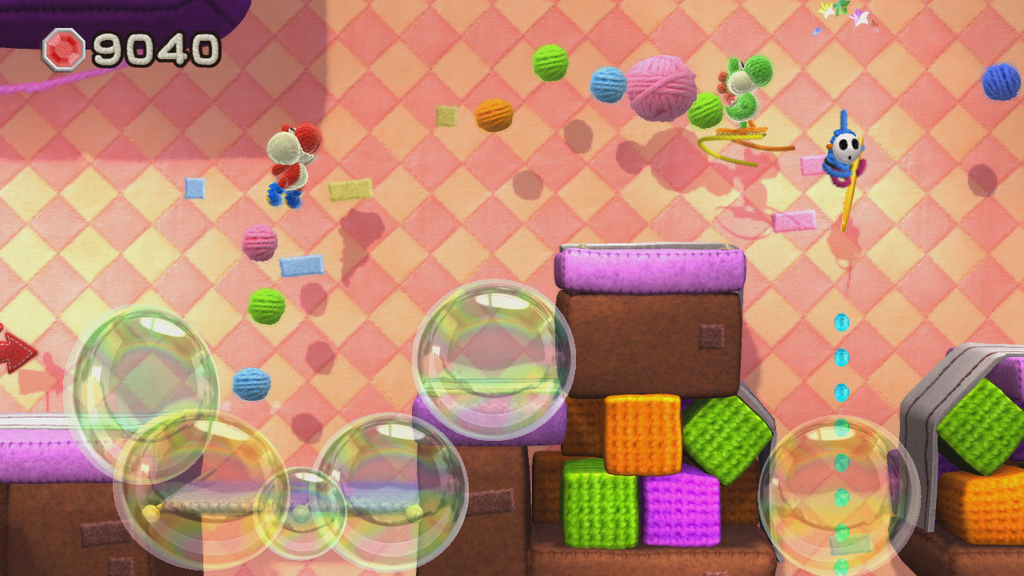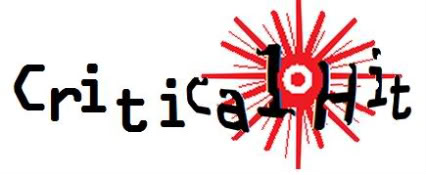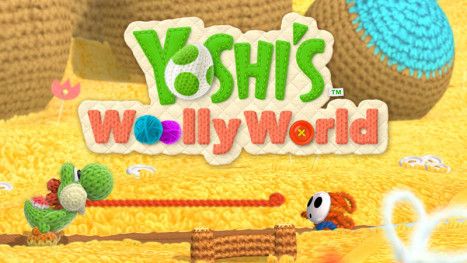- Format: Wii U
- Unleashed: Out Now
- Publisher: Nintendo
- Developer: Good-Feel
- Players: 1-2 (offline only)
- Site: https://www.nintendo.co.uk/Games/Wii-U/Yoshi-s-Woolly-World-892537.html
- Game code provided by the publisher
Yoshi’s Wooly World is very Nintendo. It’s a 2D platformer, very bright and colourful, and irrepressibly cute. It’s unashamedly friendly to young and/or less talented gamers, while also (and this is what people who don’t play Nintendo games fail to understand) offering serious challenges to those willing and able to take them on. How so? Read on, and let us explain.
Let’s deal with the whole ‘wooly’ aesthetic first. It’s incredible. It couldn’t have been done any better; the detail on display during the few sections Yoshi turns gigantic is amazing. It’s like you’re remote-controlling a knitted diorama, full of little details such as bows Yoshi can unravel with his tongue to reveal hidden items, and clouds that are hanging from faintly visible string (so yes, there’s a hint of LittleBigPlanet in there). But is it knitting, crochet, or macramé? Frustratingly, this vital question is never definitively answered.
The design may be all-new to Yoshi, but gameplay will be instantly familiar to anybody who’s played a previous game in the series. Most enemies can be snatched into your dinosaur gob with a quick flick of the tongue, and then either spat back out one end or dropped out of the other as an egg (or, rather, ball of yarn) to be aimed and thrown later. Beads take the place of coins, but their function has been remixed. Interestingly, Nintendo has done away with the concept of finite lives here entirely. Once you hit a checkpoint, you can restart from that checkpoint as many times as you like without penalty (save enemies and items past that point resetting as usual) no matter how many times you die. This is an excellent decision. Talented players will always have a stack of lives in reserve in games such as this anyway, and it avoids the frustration usually experienced by younger players when they run out of lives after almost completing a level.

Usually, the Shy Guys will just be minding their own business when you attack them. It’s EXACTLY THE SAME as Shadow of the Colossus.
So it’s not ‘collect 100 get a 1up’, but more ‘bank as much as you can’. As you progress through the game, you will gradually build up a list of ‘badges’. Before beginning a level, you have the option of buying a badge which affords you some sort of advantage for the duration of the stage. These advantages include surviving a fall into a bottomless pit, revealing and hinting at hidden items and areas, turning Yoshi into a magnet for nearby beads and items, and more. Badges therefore serve not only as another helping hand for those that need it, but also as a tool for the experienced player on a second run through when searching for missed items.
Each level will reward you with a star for finishing with Yoshi at full health, a star for collecting enough beads to collect all 20 Miiverse stamps, a star for collecting all five bundles of yarn (which also unlocks a new Yoshi skin), and a star for collecting all five flowers (collect all 40 in a world to unlock a bonus level). If you think that you can breeze through the game from start to finish collecting all of these with little to no effort in one run, you are sorely mistaken.
There are only six worlds, but these will easily last you a solid 10-12 hours on your first pass through. If you’re for some reason worried about having to use GamePad features, don’t be; touchscreen and motion controls are ignored entirely, and in fact the game is at pains to emphasise the variety of controllers you can use to play (you can ignore the GamePad completely once the game’s loaded should you so wish).
First play through or third, novice or expert, Yoshi’s Wooly World is a joy to play. There are parallels with Kirby and the Rainbow Paintbrush (striking visual style, sections where the main character transforms), but this actually has more in common with Super Mario 3D World. Why? Simply because ideas that would drive a whole game elsewhere are here held up as a brilliant example of inventiveness for one level, and then rarely (if ever) visited again. The dog that features in marketing materials, for example – Poochy – is absent for most of the game (but becomes a buyable badge). Bearing this in mind, it’s surprising that a few boss models are reused, but the second fight is never identical.

The controls are fine-tuned in a way that only Nintendo games ever seem to be when it comes to platformers, but because of this the game sometimes demands spot-on precision and timing for jumps. Players can therefore switch to and from ‘Mellow Mode’ at any time, where Yoshi gets extra health and – importantly – is able to float in the air indefinitely, thanks to a pair of handy wings. This allows you not to fly all over the screen, but to take jumps without having to worry about lining Yoshi up perfectly for takeoff and landing. Again, ideal for younger players – who can get a helping hand from an older family member, thanks to the local co-op.
It’s hard to criticise this game. The bosses are perhaps all a little too easy to defeat (though fun to play against), and the noise Yoshi makes when extending his jump for a final second, cycling his little legs in the air, really makes it sound like he’s trying for a poo – but that’s about it. The personality in the characters and the levels themselves, the items hidden in places both obvious and super-sneaky, the rewards for exploring, the risk/reward mechanic for the trickiest pickups, the constant surprises, the urge to see everything the game has to offer… Yoshi’s Wooly World feels like a Miyamoto platformer – and that’s the highest praise possible for a non-Miyamoto game.










Comments